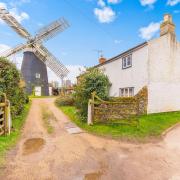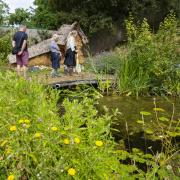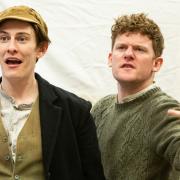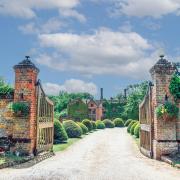This is an exhibition which offers you the rare opportunity to trespass in the footsteps of those who walked by night. Derek James reports.
I couldn’t have been very old but I remember my father telling me about a tough-looking chap walking past our house in Diss during the 1950s.
“He’s a poacher,” he said.
“Wow,” I thought. “What a great job.”
Mind you I didn’t have clue what poaching was, but it sounded very exciting and dangerous.
Today we don’t hear that much about this 'way of life' but it is an intriguing subject and that is why an exhibition at the wonderful Moyse’s Hall Museum in Bury St Edmunds is well worth taking a look at.
By Night: Perspectives of Poaching explores the illicit world of the poacher with rural objects, art and literature from the darker side of West Suffolk Heritage Service’s collection to illustrate the perils and conflicts of this way of life.
And it also includes items on loan from the Museum of East Anglian Life, Bungay Museum and the Roald Dahl Museum and Story Centre.
The exhibition highlights the local history of hunting and poaching from the 18th to the 20th centuries and it also traces the roots of poaching back to the days of the Norman Conquest.
Romantic outlaws or country villains? In tackling these fascinating issues, the exhibition brings the origins, equipment, legends, allies, enemies and the consequences of poaching into the spotlight.
“Poaching forms a key element of the crime and punishment gallery at Moyse’s Hall Museum,” says Ben Ridgeon, heritage officer at West Suffolk Council, “but in learning about these collections I found that there were still more stories to tell if we could offer this enthralling subject a wider stage. By Night: Perspectives of Poaching is that stage.”
The exhibition is open from 10am to 5pm and Sundays 12pm-4pm until Sunday, May 1. Admission: adult £5 concessions £4.50 children £3 (5-16 years). Heritage ticket holders can attend the exhibition free of charge. Tickets can be booked online at: https://www.moyseshall.org/ or for details call: 01284 758000.

Trouble in the countryside
There was a time when those who were found guilty of stealing livestock, and committing other offences such as arson and rioting during the agricultural wages disputes, were hanged before large crowds on Castle Hill at Norwich.
In the 1800s those who lost their lives included:
1801: Richard Grafton for stealing a cow. Henry Laron (41) for horse stealing.
1802: William Dunnett for horse stealing and John Saunders for stealing a cow, executed at Thetford. William Rix for sheep stealing.
1808: John Chapman (34) and William Fuller (36) for shooting at, and wounding, a gamekeeper.
1816: Daniel Harwood and Thomas Thody for rioting at Downham Market in connection with agricultural wages dispute, and Thomas Moy (33), for sheep stealing. Moy farmed two acres of land at Binham, Norfolk.
1822: Two men who fought at Waterloo, Noah Peak and George Fortis, for setting fire to stacks.
1824: Miles Wiseman for shooting at and wounding a gamekeeper. Robert Gibson was executed at Thetford for sheep stealing.
1829: John Wood (41), Thomas Butler (29) for sheep stealing; Richard Everett (28) for horse stealing.
1831: Richard Nockolds for firing stacks at Swanton Abbott.
1835: James Clarke (28) for setting fire to a wheat stack at Buxton.
The last public execution in Norwich took place during August in 1869.



























